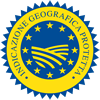Description
The Fungo di Borgotaro PGI refers to fresh and dried porcini mushrooms originating from the spontaneous growth (in woods) of the following species: Boletus aestivalis, Boletus pinophilus, Boletus aereus and Boletus edulis.
Production Area
The production area of Fungo di Borgotaro PGI is within the territory of the municipalities of Albareto, Borgo Val di Taro, Bedonia, Berceto, Compiano and Tornolo in the Province of Parma, in the Emilia Romagna region, and in the municipalities of Pontremoli and Zeri in the Province of Massa-Carrara, in the Tuscany region.
Production Method
Fungo di Borgotaro PGI is obtained using methods which differ substantially from those typically used for fruit and vegetables, as it is not cultivated in the classic sense of the term, but rather grows spontaneously. We can therefore refer to the management of the woods in which harvesting takes place, which differ according to environmental conditions, as a "treatment". The woods may be “treated” in the following ways: pruning away saplings and the oldest suckers in coppiced woodland and successive pruning in the high woodland areas. The mushrooms must be picked between late spring and late autumn, depending on the variety: the species Boletus aestivalis appears at the end of spring, and in hotter weather they can be found right through to autumn; Boletus aereus, on the other hand, is harvested in the hotter months, and Boletus pinophilus between spring and late autumn; Boletus edulis is only harvested in autumn.
Appearance and Flavour
Fungo di Borgotaro PGI has a rounded and fleshy body, with a pleasant mushroomy smell and aromatic flavour. The cap varies in colour: Boletus aestivalis - dark red to brown; Boletus pinophilus - brownish garnet-wine red; Boletus aereus - coppery-bronze; Boletus edulis - creamy white to chestnut-brown and blackish brown. The diameter of the cap can range from 20 to 30 cm.
History
Fungo di Borgotaro PGI was first documented in the Istoria di Borgo Val di Taro by Alberto Clemente Cassio (1669-1760). Mushroom production was later recorded in the Vocabolario topografico dei Ducati di Parma, Piacenza e Guastalla by Lorenzo Molosi (Parma, 1832-1834); in the entry dedicated to the area of Albareto, the author cites the flourishing production of mushrooms. The sale of Borgotaro mushrooms developed further during the 19th century, giving rise to various attempts to rationalize the market, and in 1964 the first reserves for picking mushrooms were established in Italy, in order to prevent over-exploitation.
Gastronomy
Fungo di Borgotaro PGI is best eaten immediately after picking. It can, however, be kept for a few days on the lowest shelf in the refrigerator, or in a cool place. When keeping them for a longer period of time, they can be dried – without washing them – by cleaning the outside, slicing them and letting them dry for a few days on a net in the sun. Alternatively, the mushrooms can also be frozen fresh or after cooking. Fungo di Borgotaro PGI is an ideal ingredient for many traditional dishes: raw, sliced thinly and served with shavings of Parmigiano-Reggiano PDO cheese; with polenta; in sauces; as a fresh pasta filling; cooked in olive oil, parsley and garlic; grilled; or preserved in oil.
Marketing
The product is marketed as Fungo di Borgotaro PGI, both fresh and dried. There are four species: Boletus aestivalis, or Red; Boletus pinophilus, or Brown; Boletus aereus, or Magnan; and Boletus edulis or Fungo del Freddo. They are sold from late spring to autumn, in sealed boxes or containers.
Distinctive Features
The centuries-old silviculture carried out in the production area of the Fungo di Borgotaro PGI, the only mushroom in Europe with a quality mark and the only fruit and vegetable product that is not cultivated, has a positive influence on its growth, contributing to its organoleptic properties and high quality, and distinguishing it from other mushrooms.




























